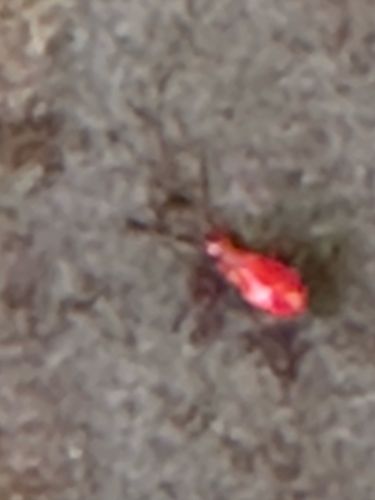Red Spider Mite
Scientific Name: Tetranychus urticae
Order & Family: Trombidiformes, Tetranychidae
Size: 0.4 to 0.5 mm (adult)

Natural Habitat
Found on the underside of leaves of many plants, both indoors and outdoors, especially in warm, dry conditions. They thrive in greenhouses, gardens, and agricultural fields.
Diet & Feeding
It is a polyphagous herbivore, feeding by piercing plant cells with its mouthparts and sucking out the contents. This causes stippling (tiny dots) on leaves, and in severe infestations, leaves may turn yellow or bronze, curl, and drop off.
Behavior Patterns
Red spider mites are known for their rapid reproduction, especially in hot, dry weather. They lay tiny, spherical eggs, and their life cycle from egg to adult can be completed in as little as a week. They often create fine silk webs on plants, particularly when infestations are heavy, which helps them move between leaves and offers some protection from predators. They are typically found in colonies.
Risks & Benefits
Potential risks include significant damage to a wide range of agricultural and horticultural crops, leading to reduced yields or plant death. They are a major pest in many farming systems. There are no direct benefits to humans, and their ecological benefit is primarily as a food source for natural predators like predatory mites, ladybugs, and lacewings.
Identified on: 9/9/2025